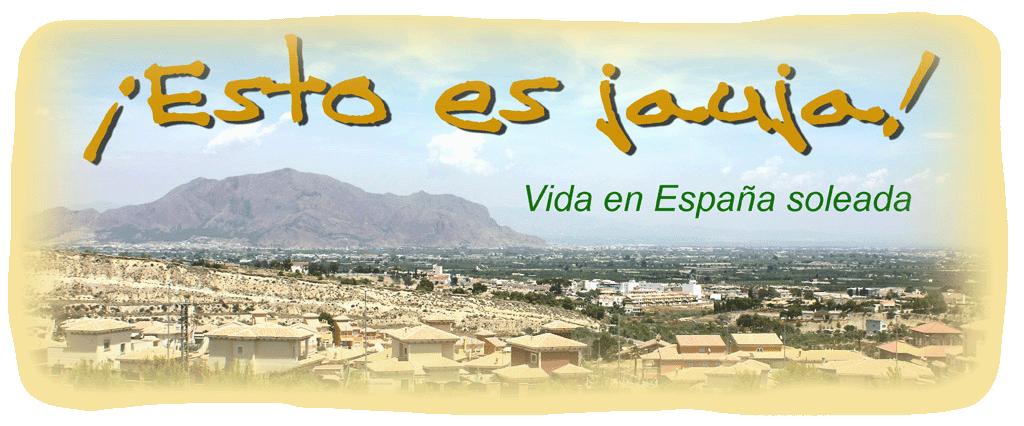During our lesson yesterday, Eduardo explained something of the complicated system of government for Spain.
The Kingdom of Spain is a parliamentary monarchy, structured on the 1978 Constitution, which states the King is the Head of State.
The current monarch is Juan Carlos I (Juan Carlos de Borbón y Borbón) who was proclaimed King on 22nd November 1975, following the death of the previous Head of State, Francisco Franco. It was Juan Carlos who oversaw the transition of Spain to a democracy.
The 1978 Constitution established three powers as the form of government: the Legislative, the Executive and the Judiciary.
The Cortes Generales – the Spanish Parliament – forms the legislative branch: a bicameral parliament with 350 members elected by popular ballot to the lower chamber, the Congress of Deputies, every four years. The number of deputies per constituency depends on the population of each province.
The upper chamber of the Cortes Generales is the Senate, which currently consists of 259 Senators. 208 were elected in the 2004 general election: 4 are allocated to each Spanish province, 3 to each of the larger islands (Gran Canaria, Mallorca and Tenerife), and one each to the smaller islands (Ibiza-Formentera, Menorca, Fuerteventura, Gomera, Hierro, and Lanzarote). The autonomous cities of Ceuta and Melilla are each allocated 2 Senators.
The remaining Senators are designated by the Autonomous Communities: one each, plus another for every one million inhabitants.
The Senate lifetime is also 4 years.
The national government is headed by the Council of Ministers (Cabinet), which is, in turn, headed by the President of the Spanish Government, or Prime Minister, who is appointed by the King after investiture vote in Congress following general elections.
The current President is José Luis Rodríguez Zapatero from the PSOE (Socialist party) which won 164 seats in the last general election: the opposition right wing party, the Partido Popular, won 146 seats.
The Constitution structures the Spanish State into 17 autonomous communities (Ceuta and Melilla were granted more limited autonomy in the mid-1990s). Each region’s right to self-autonomy is guaranteed by a Statute of Autonomy. Each has its own parliament, regional president, government, and supreme court.
Legislative powers vary between the communities. Elections generally take place every four years.
Most of the communities are further divided into Provinces of which there are 53 in total. Government in the provinces is led by the provincial government, the Diputación Provincial, with members elected by the members of the city councils. It has no legislative authority.
Some of the provinces are further divided into Cormacas eg the Vega Baja which is described as a Mancomunidad. These again have no legislative powers.
Local government divides Spain into municipalities – more than 8,000 - where towns and cities are governed and administered by a Town or City Council. The Council is made up of councillors elected by a popular four-yearly ballot, and is required to meet in full session at least every 3 months. The Mayor directs municipal administration and is elected from amongst the councillors after local elections, although is generally the candidate who led the majority party’s list in the local poll.
Eduardo defined a city or cuidad as a conurbation with more than 10,000 inhabitants. Conurbations with less than 10,000 are pueblos or towns. Bigastro, with about 7,000 inhabitants, he defined as a municipality. However, Bigastro still has a Council, raises its own taxes, is responsible for its own budget and by-laws and sets out its own town planning.
So in order; Bigastro is a municipality within the Vega Baja comarco , the Vega Baja is part of the province of Alicante which in turn is part of the Valencian community, an autonomous region of Spain.
The Autonomous regions are:- Andalucia, Aragon, Asturias, Baleares (Balearic Islands), Ceuta*, Canarias (Canary Islands), Cantabria, Castilla-La Mancha, Castilla y Leon, Cataluna, Comunidad Valenciana, Extremadura ,Galicia, La Rioja, Madrid, Melilla*, Murcia, Navarra and Pais Vasco (Basque Country). * These are autonomous cities.

No comments:
Post a Comment